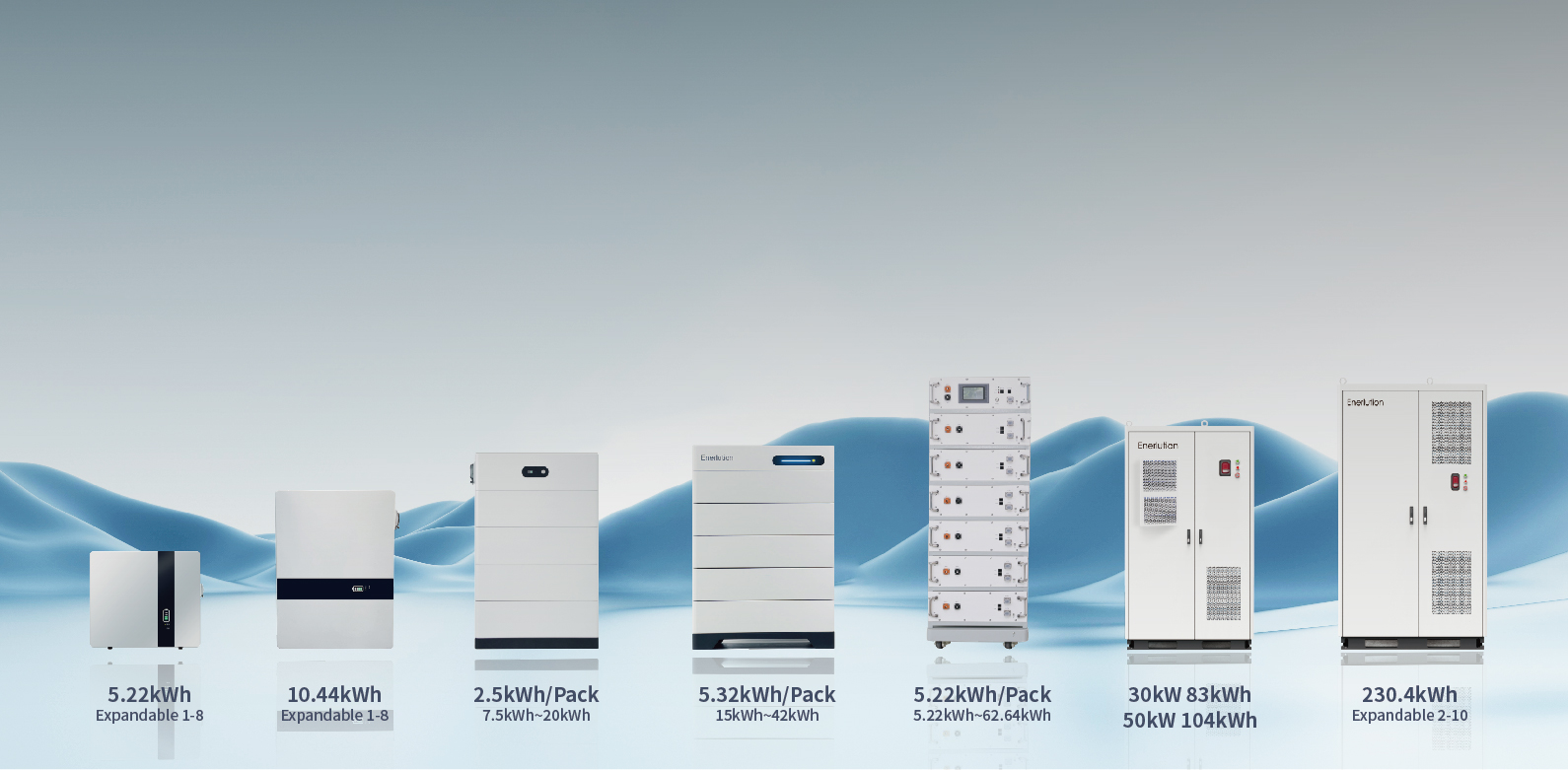Research on the Safety Applications of Lithium Batteries in Residential Energy Storage
Research on the Safety Applications of Lithium Batteries in Residential Energy Storage
With the global energy transition and the rapid development of renewable energy, lithium batteries have become the preferred energy storage technology in residential energy storage systems due to their high energy density, long cycle life, and good environmental adaptability. However, the safety issues related to lithium batteries are increasingly prominent, becoming a key factor restricting their widespread application in residential energy storage. This paper will explore and analyze the importance and necessity of lithium batteries in residential energy storage applications.

Importance of Lithium Batteries in Residential Energy Storage
1. Improving Energy Efficiency
Lithium batteries have a higher energy conversion efficiency, enabling them to efficiently store renewable energy such as solar and wind power, thereby reducing energy waste. In residential energy storage systems, lithium batteries can store excess solar energy generated during the day and release it during the night or on cloudy days, achieving optimal energy allocation and high utilization efficiency. According to related research, the energy conversion efficiency of lithium battery storage systems can exceed 90%, which is significantly higher than traditional lead-acid batteries and other storage technologies, thereby significantly improving energy utilization efficiency[1].
2. Enhancing Power Supply Stability
In remote areas or regions with unstable grids, residential energy storage systems can serve as backup power sources to ensure basic electricity needs for households. Lithium batteries, with their fast charge and discharge capabilities, can release large amounts of energy in a short period, providing stable power supply to households. For example, in the event of a grid failure or insufficient power supply, a lithium battery storage system can quickly activate to provide essential electricity such as lighting and communication, preventing the inconvenience and losses caused by power outages[2].

3. Promoting the Integration of Renewable Energy
With the continuous increase in the installed capacity of renewable energy, effectively utilizing these resources has become a crucial issue. Lithium battery storage systems can work in conjunction with renewable energy generation devices such as photovoltaic panels and wind turbines, storing excess renewable energy to avoid wastage due to overgeneration. According to the International Energy Agency (IEA), the global share of renewable energy in total electricity generation exceeded 30% in 2023, and the application of lithium battery storage systems can further improve the utilization of renewable energy, promoting the optimization of the energy structure[3].
Necessity of Lithium Batteries in Residential Energy Storage
As the global energy crisis intensifies, the reserves of traditional fossil fuels are limited, and their environmental pollution is severe. Lithium batteries, as a representative of clean energy, can reduce dependence on traditional energy sources, lower energy consumption, and reduce carbon emissions in residential energy storage applications. According to the IEA, global energy demand is expected to grow by about 50% by 2050 compared to 2020, and lithium battery storage systems can effectively alleviate energy supply pressures, providing strong support for addressing the energy crisis[4].
1.Enhancing Household Energy Autonomy
In residential energy storage systems, lithium batteries can help households achieve energy self-sufficiency and reduce reliance on the public grid. Households can install photovoltaic panels and other renewable energy generation devices to store the generated electricity in lithium batteries, meeting daily electricity needs. Related studies have shown that households using lithium battery storage systems can increase their energy autonomy by more than 30%, reducing the impact of grid failures or power supply shortages[5].

2. Ensuring Household Power Safety
The application of lithium batteries in residential energy storage can provide more secure and reliable power supply for households. Lithium batteries have better safety performance, and through real-time monitoring and protection by Battery Management Systems (BMS), the risks of overcharging, deep discharging, and overheating can be effectively prevented. For example, the BMS can monitor parameters such as battery voltage, current, and temperature, and take protective measures such as cutting off the power or activating the cooling system when abnormal conditions occur, ensuring the safety of household power use[6].
Safety Issues of Lithium Batteries and Solutions
Safety Issues Analysis
During use, lithium batteries may experience thermal runaway, fire, or explosion accidents due to factors such as battery material aging, failure of the battery management system, and external environmental conditions. According to incomplete statistics, there have been multiple lithium battery storage system safety accidents globally in recent years, posing serious threats to people's life and property safety[7].
Exploration of Solutions
To address the safety issues of lithium batteries, several measures can be taken:
1. Battery Material Improvements: Using safer battery materials, such as lithium iron phosphate (LiFePO4) or lithium titanate, which have better thermal and chemical stability, can effectively reduce the risk of thermal runaway[8].
2. Optimization of the Battery Management System: Enhancing the intelligence of the BMS to achieve real-time monitoring and precise control of battery status. By incorporating big data analysis and artificial intelligence technologies, it is possible to analyze the operating data of the batteries in-depth and provide early warnings of potential safety risks[9].
3. Strengthened Safety Protection Measures: Adding necessary safety protection devices in lithium battery storage systems, such as fire-resistant materials and automatic fire extinguishing systems. When thermal runaway occurs, these measures can quickly isolate the fire source and extinguish the flames, preventing the spread of the incident[10].
4. Establishment of Standardization Systems: Establishing and improving the safety standards for lithium battery storage systems, including clear safety performance indicators, testing methods, and quality requirements. Strengthening industry regulation ensures the quality and safety of lithium battery products and standardizes the market[11].
Conclusion
The application of lithium batteries in residential energy storage is of significant importance and necessity. Their high energy density, long cycle life, and good environmental adaptability provide strong support for improving energy efficiency, enhancing power supply stability, and promoting the integration of renewable energy. However, the safety issues of lithium batteries cannot be ignored. Comprehensive measures such as improving battery materials, optimizing battery management systems, enhancing safety protection measures, and establishing standardization systems are needed to ensure the safe and reliable operation of lithium batteries in residential energy storage. Only by doing so can we fully leverage the advantages of lithium batteries in residential energy storage, promoting the optimization of the energy structure and sustainable development.
References
[1] Sun, Y., et al. "Review of Battery Storage System State Estimation." Journal of Central South University (Natural Science Edition), 2024, 55(6): 2320–2333.
[2] Meng, G., et al. "Research Progress on Thermal Runaway Detection and Safety Control Technologies of Lithium-ion Battery Energy Storage Stations." High Voltage Engineering, 2024, 50(7): 3105–3127.
[3] International Energy Agency (IEA). 2023 Global Energy Report.
[4] International Energy Agency (IEA). 2023 World Energy Outlook Report.
[5] Zhao, L., et al. "Current Status of Safety Evaluation Standards for Lithium-ion Batteries Used in Energy Storage." Batteries, 2024, 54(2): 239–243.
[6] Huo, L., et al. "Development Trends of Safety Technologies in Lithium-ion Battery Energy Storage — A Patent Data Analysis of China’s Current Development Status." Energy Storage Science and Technology, 2022, 11(8): 2671–2680.
[7] China Energy Storage Network News Center. "67 Energy Storage Accidents Reviewed: 6 Occurred in the U.S. in 2023, 1 in France, 1 in Taiwan." China Energy Storage Network, 2023 [2024-02-09].
[8] Meng, G., et al. "Research Progress on Thermal Runaway Detection and Safety Control Technologies of Lithium-ion Battery Energy Storage Stations." High Voltage Engineering, 2024, 50(7): 3105–3127.
[9] Sun, Y., et al. "Review of Battery Storage System State Estimation." Journal of Central South University (Natural Science Edition), 2024, 55(6): 2320–2333.
[10] Meng, G., et al. "Research Progress on Thermal Runaway Detection and Safety Control Technologies of Lithium-ion Battery Energy Storage Stations." High Voltage Engineering, 2024, 50(7): 3105–3127.
[11] Zhao, L., et al. "Current Status of Safety Evaluation Standards for Lithium-ion Batteries Used in Energy Storage." Batteries, 2024, 54(2): 239–243.

If you have any question,please contact us.
Email: Susan@enerlution.com.cn
Add: No. 33, Qiuju Road, Baiyan Science and Technology Park, High-tech Zone, Hefei, China






